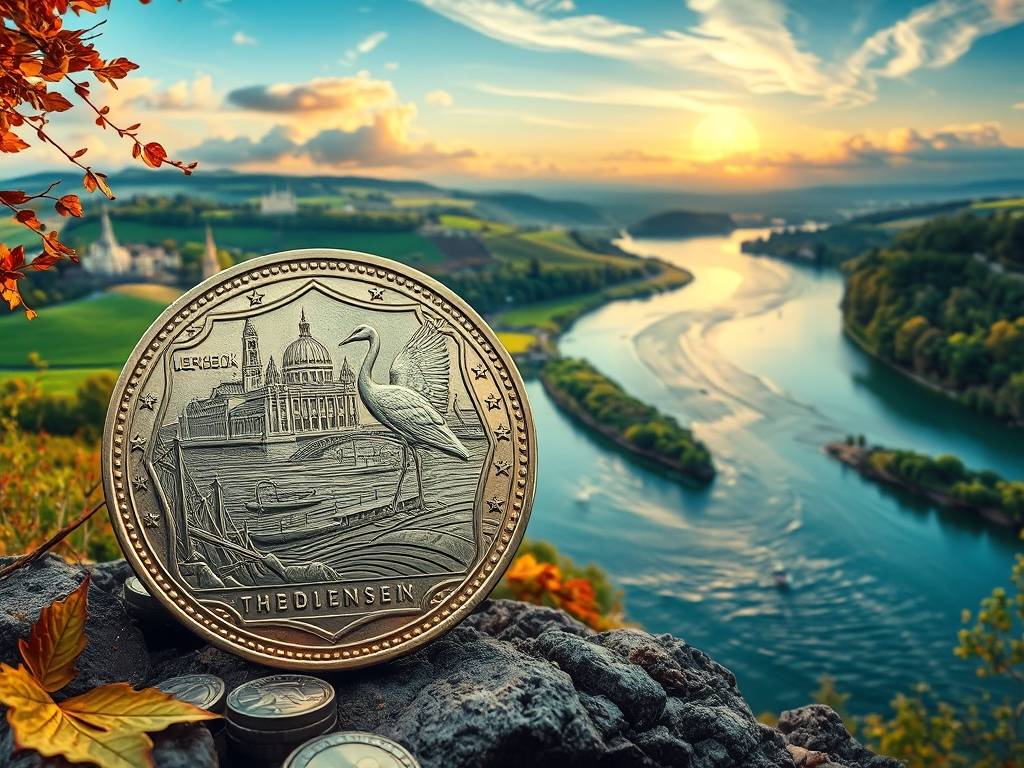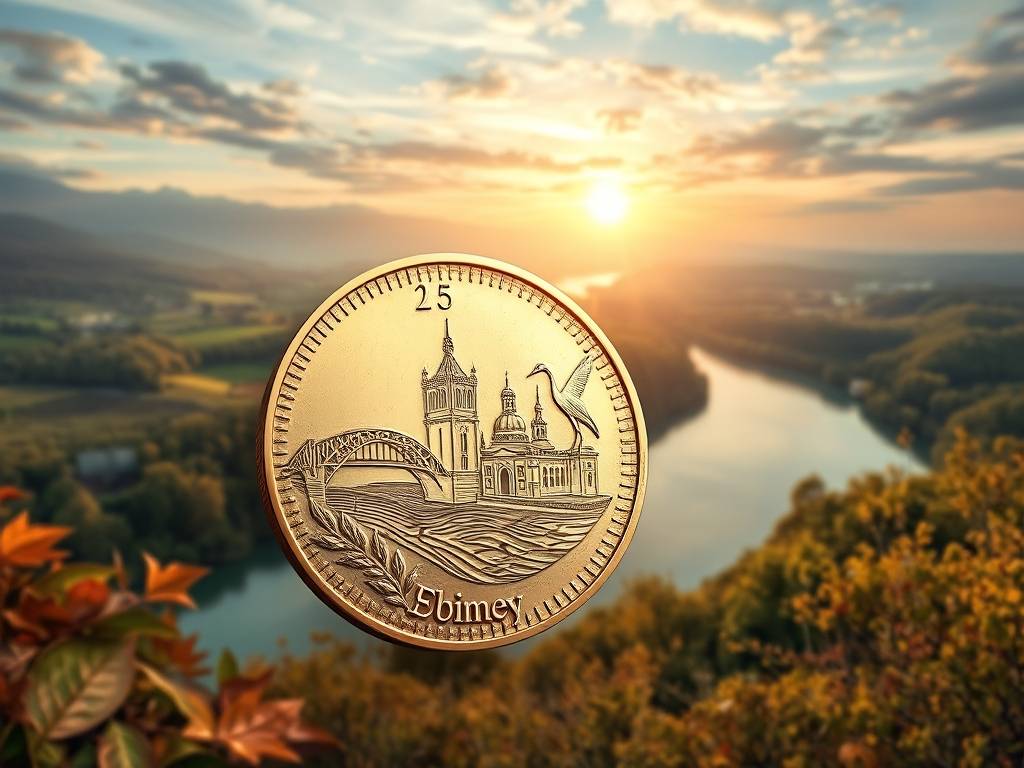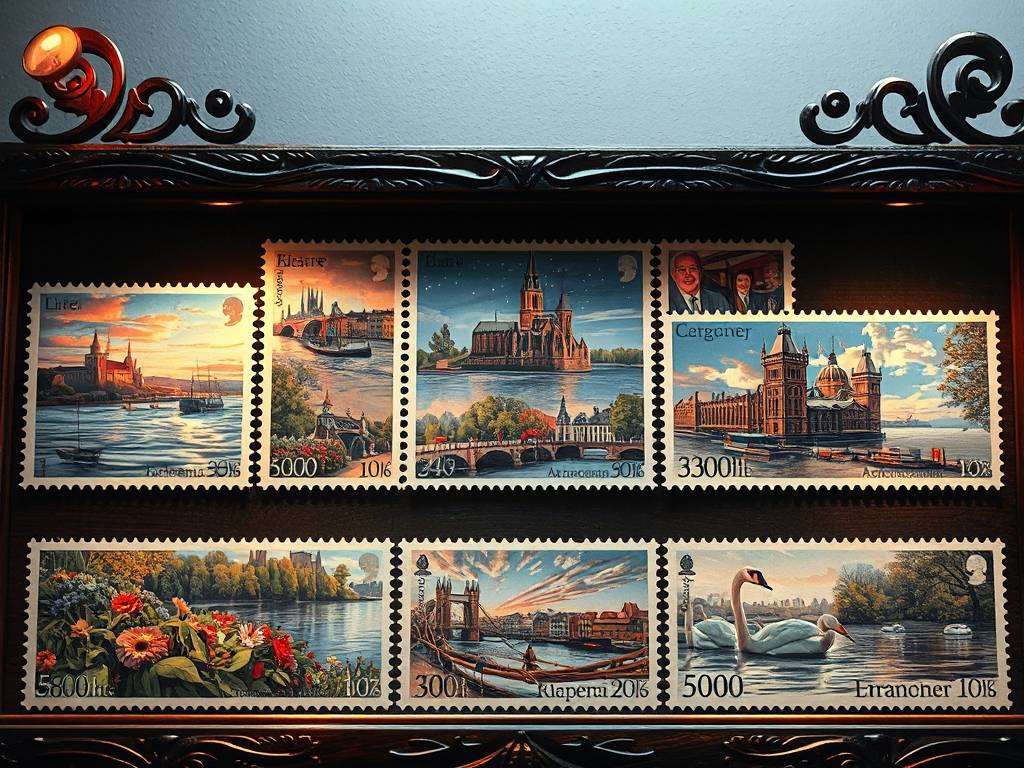Global Travel Information
Elbe River Coins: Commemorative Currency
The Elbe River Coins: More Than Money, A Legacy in Your Pocket

Imagine holding a small, beautifully crafted piece of metal in your hand. It has the weight of a coin, but it doesn't buy your morning coffee. Instead, it tells a story—a story of a mighty river, of cities rising from its banks, of history flowing as steadily as its current. This is the world of Elbe River coins, a fascinating niche of numismatics where commemorative currency transcends its monetary function to become a tangible piece of cultural heritage. For collectors, history enthusiasts, and travelers alike, these coins offer a unique portal into the heart of Europe.
The Elbe River, one of Central Europe's major waterways, has been a lifeline for centuries. From its source in the Czech Republic's Giant Mountains to its endpoint at the North Sea in Germany, it connects stunning landscapes, historic towns, and bustling metropolises like Dresden, Meissen, Magdeburg, and Hamburg. It's no surprise that this iconic river has been immortalized repeatedly in metal. But what exactly are these coins, and why do they hold such appeal?

Primarily, Elbe River coins are a category of commemorative coins issued by official mints, most notably the German and Czech state mints, as well as by local cities and private institutions. Unlike regular circulation coins, they are legal tender but are not intended for everyday transactions. Their purpose is celebration and remembrance. They are struck to mark significant anniversaries of Elbe River cities, to honor the river's ecological and cultural significance, or to celebrate pivotal historical events along the Elbe River. This makes them a powerful tool for preserving regional history, capturing moments in time in a durable and collectible form.
One of the most compelling aspects of collecting these coins is their incredible diversity. Let's explore the different types you might encounter.
First, there are the official state-issued coins. Germany's "Bundesrepublik Deutschland" mint has released several stunning pieces. A prime example is the 2012 €10 silver coin commemorating the "100th Anniversary of the Hamburg Elbe Tunnel." The coin's design ingeniously depicts the tunnel's intricate shaft architecture, paying homage to this engineering marvel that connects the city under the very river that defines it. Another significant issue is the 2011 €10 silver coin celebrating "500 Years of the Dresden Kreuzchor," a world-renowned boys' choir. While not exclusively about the river, the coin features a view of the Dresden skyline, unmistakably situated on the banks of the Elbe, linking the city's cultural heritage with its geographical identity.
From the Czech side, the Czech National Bank has also contributed to this numismatic narrative. Coins often highlight the river's source in the Krkonoše Mountains or feature the beautiful city of Ústí nad Labem, showcasing the river's journey from its very beginning. These pieces are crucial for a complete collection, illustrating the binational character of the Elbe.
Beyond federal mints, local city commemorative coins form a rich and charming subcategory. These are often issued in non-standard denominations, like 5 or 8 Euros, or as traditional Thaler. A city like Meissen, famous for its porcelain, might issue a coin featuring its iconic Albrechtsburg Castle perched above the Elbe. Torgau, a city pivotal to World War II history for the meeting of American and Soviet troops, has issued coins remembering "Elbe Day," a powerful testament to peace and the end of conflict. These local issues are deeply personal, offering a ground-level view of the river's impact on community identity.
The artistic and technical execution of these coins is a major part of their allure. Minting techniques have evolved dramatically, allowing for breathtaking detail. Many modern Elbe River commemoratives feature high-relief minting, which gives the designs a sculptural, almost three-dimensional quality. You can feel the texture of the water and the contours of the riverbanks. Selective gold plating is another popular technique, where parts of a silver coin, like the dome of a church or a sailing ship, are plated with gold, creating a stunning visual contrast.
The themes depicted on the coins are as varied as the river itself. Common motifs include:
- River Landscapes and City Skylines: Panoramic views of Dresden's Baroque architecture, Hamburg's modern harbor, or the vineyards of the Elbe Valley.
- Historical Vessels: From old paddle steamers that still ply the river today to medieval trading cogs, celebrating the Elbe's role as a transport artery.
- Architectural Marvels: Bridges like the "Blaues Wunder" in Dresden or the harbor tunnels, symbolizing human ingenuity in connecting the river's divided banks.
- Ecological Themes: Coins highlighting the Elbe River Biosphere Reserve, a UNESCO-recognized area, often feature local flora and fauna like white storks, beavers, and otters, promoting a message of sustainable river conservation.
For those new to this field, starting a collection can be a thrilling journey. The first step is to define your focus. The field is vast, so specializing makes it manageable and more meaningful. You could focus on a specific theme, such as "Elbe River bridge coins" or "coins featuring Elbe River steamers." Alternatively, you could aim to collect a coin from every major city along the river, creating a numismatic map of the Elbe.
When acquiring coins, it's crucial to source them from reputable dealers, official mint websites, or established auction houses. Pay attention to the coin's condition (graded from "mint state" to "circulated"), its mintage number (lower numbers often mean higher rarity), and its composition (silver, gold, or copper-nickel). A coin's story is enriched by its certificate of authenticity, which provides context and guarantees its legitimacy.
The value of these coins extends far beyond their precious metal content or potential for financial appreciation. The true value lies in their role as tangible pieces of history. Holding a coin that commemorates the reconstruction of the Dresden Frauenkirche is to hold a piece of the city's resilience and rebirth. A coin marking the Elbe Flood of 2002 serves as a solemn reminder of the river's power and the communities' solidarity. They are educational tools, conversation starters, and beautiful works of art.
In an increasingly digital world, the physicality of a coin—its weight, its luster, the fine details you can see under a magnifying glass—creates a profound connection to the past. It's a connection that a digital image can never replicate. For travelers who have cruised the Elbe or walked its banks, these coins become three-dimensional souvenirs, evoking memories of landscapes and cityscapes with a simple glance.
In conclusion, Elbe River coins are far more than mere collectibles. They are a legacy in your pocket. They weave together the threads of geography, history, art, and technology into a single, portable disc of metal. Each coin is a chapter in the ongoing story of one of Europe's great rivers, a story of human settlement, cultural flourishing, engineering triumph, and environmental awareness. Whether you are a seasoned numismatist or simply someone captivated by the romance of the Elbe, delving into the world of its commemorative currency is a rewarding pursuit. It is an invitation to explore, to learn, and to hold a small piece of a timeless journey in the palm of your hand.
相关文章
- Elbe River Puzzles: Jigsaws & Brain Teasers
- Elbe River Postcards: Send a Memento Home
- Elbe River Stamps: Collectible Postal Items
- Elbe River Maps: Printable & Digital Versions
- Elbe River Atlases: Comprehensive Geographic Guides
- Elbe River Guidebooks: Pocket-Sized Travel Tips
- Elbe River Brochures: Free Information for Travelers
- Elbe River Flyers: Local Event Announcements
- Elbe River Posters: Decorative Prints of the River
- Elbe River Calendars: 2025 Wall & Desk Versions
发表评论
评论列表
- 这篇文章还没有收到评论,赶紧来抢沙发吧~


